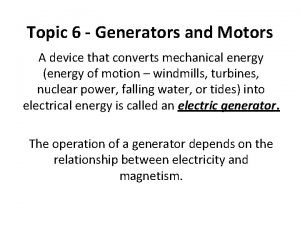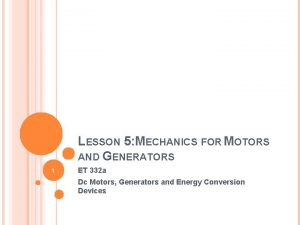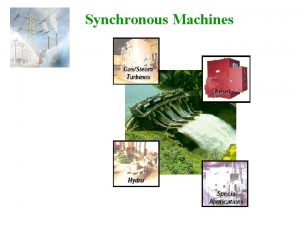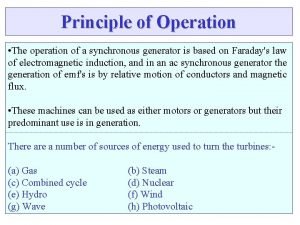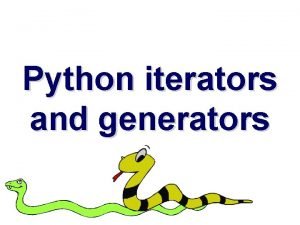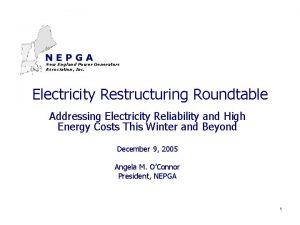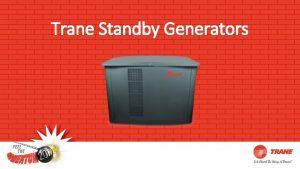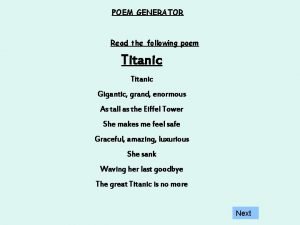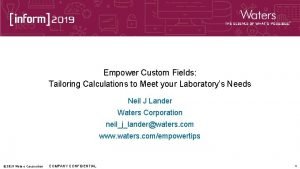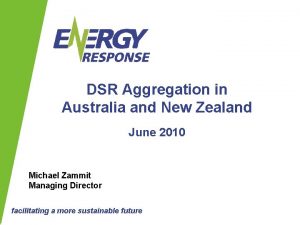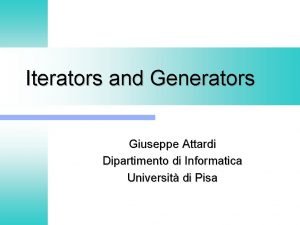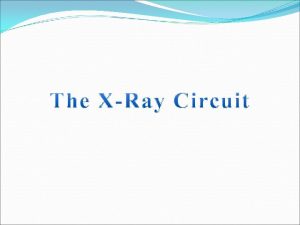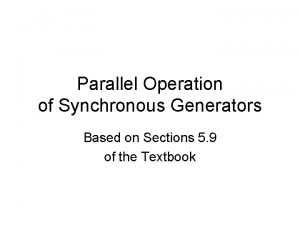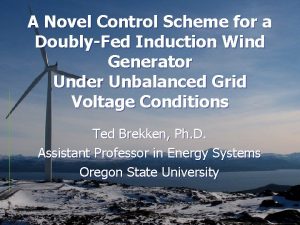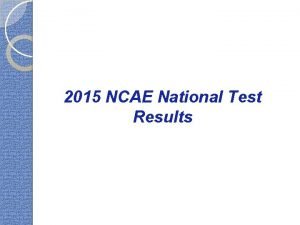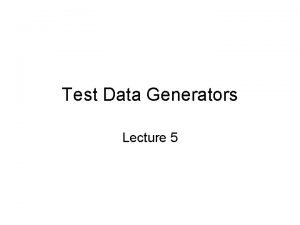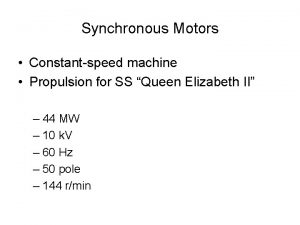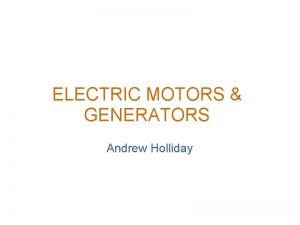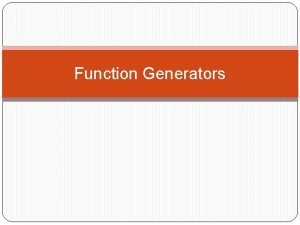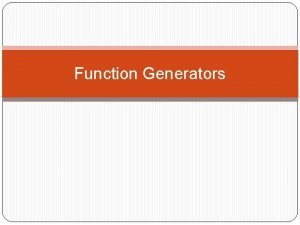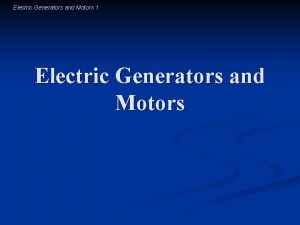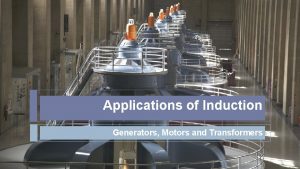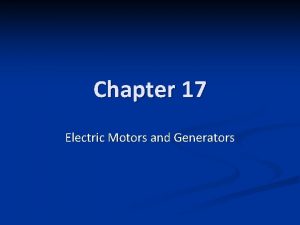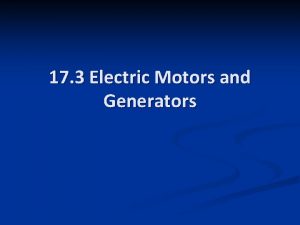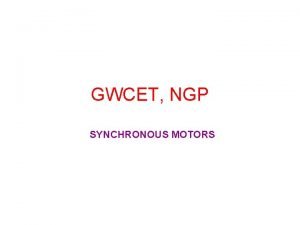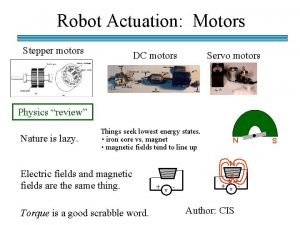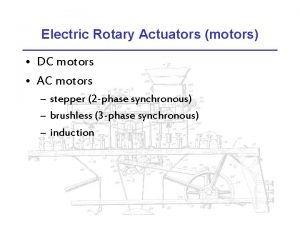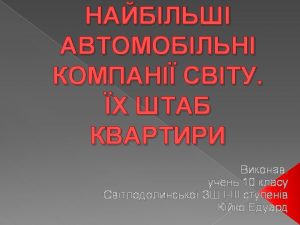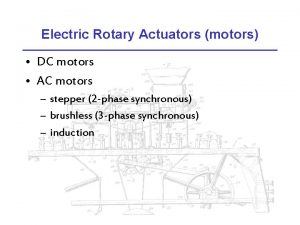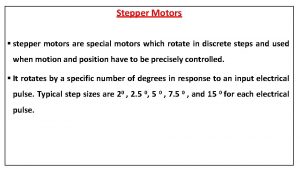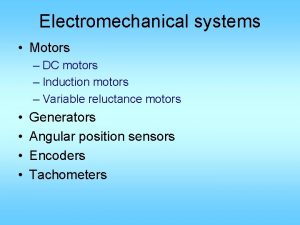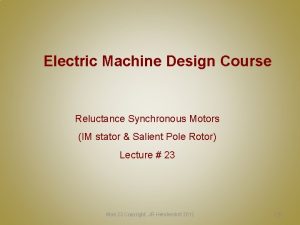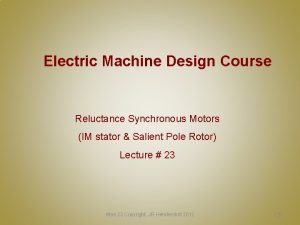Synchronous Motors and Generators Synchronous Motors Constantspeed machine




















- Slides: 20

Synchronous Motors and Generators

Synchronous Motors • Constant-speed machine • Propulsion for SS “Queen Elizabeth II” – 44 MW – 10 k. V – 60 Hz – 50 pole – 144 r/min

Synchronous Motors (continued) • Construction – Stator identical to that of a three-phase induction motor – now called the “armature” – Energize from a three-phase supply and develop the rotating magnetic field – Rotor has a DC voltage applied (excitation) – Rotor could be a permanent-magnet type

Synchronous Motors (continued) • Operation – Magnetic field of the rotor “locks” with the rotating magnetic field – rotor turns at synchronous speed

Salient-Pole Rotor Excitation Windings

Salient-Pole Rotor with brushless excitation

Synchronous Motor Starting • Get motor to maximum speed (usually with no load) • Energize the rotor with a DC voltage

Salient-Pole Motor operating at both no-load and loaded conditions Angle δ is the power angle, load angle, or torque angle

Rotating Field Flux and Counter-emf • Rotating field flux f due to magnetic field in the rotor. A “speed” voltage, “counter-emf”, or “excitation” voltage Ef is generated and acts in opposition to the applied voltage. • Ef = ns fkf

Equivalent Circuit of a Synchronous Motor Armature (One Phase)

Phasor Diagram for one phase of a Synchronous Motor Armature

Synchronous Generators

Motor-to-Generator Transition

Motor-to-Generator Transition (cont) • Begin with motor driven from the infinite bus and the turbine torque in the same direction as the motor torque. • The motor operates normally, driving the water pump.

Motor-to-Generator Transition (cont) Phasor Diagram VT = Ef + Iaj. Xs

Allow the Turbine to take part load Motor becomes a generator as δ becomes > or = zero The power angle decreases to zero and then becomes positive Excitation voltage is not changed and the vector traces an arc

Motor Action Power angle is negative

Motor to Generator Transition Power angle is now = 0

Generator Action Power angle is positive Note: Iacosθi is reversed!

Generator Action (cont) • In order for Ia to reverse direction, voltage Ef must become a source voltage • Ef > V T Ia
 Generators and motors
Generators and motors Abb motors and generators
Abb motors and generators Unit of torque in si
Unit of torque in si Cylindrical
Cylindrical Synchronous machine
Synchronous machine Yield vs return python
Yield vs return python New england power generators association
New england power generators association In alternators the welding current is produced on the
In alternators the welding current is produced on the Trane 20kw standby generator
Trane 20kw standby generator 0677 hofer
0677 hofer Good poem generator
Good poem generator Empower custom fields training
Empower custom fields training Gentrack generators
Gentrack generators Famous reflectors human design
Famous reflectors human design Nfpa 2010
Nfpa 2010 Find generators
Find generators Falling load generator
Falling load generator Parallel structure generator
Parallel structure generator Wind generators
Wind generators Ncae test
Ncae test Test data generators
Test data generators
